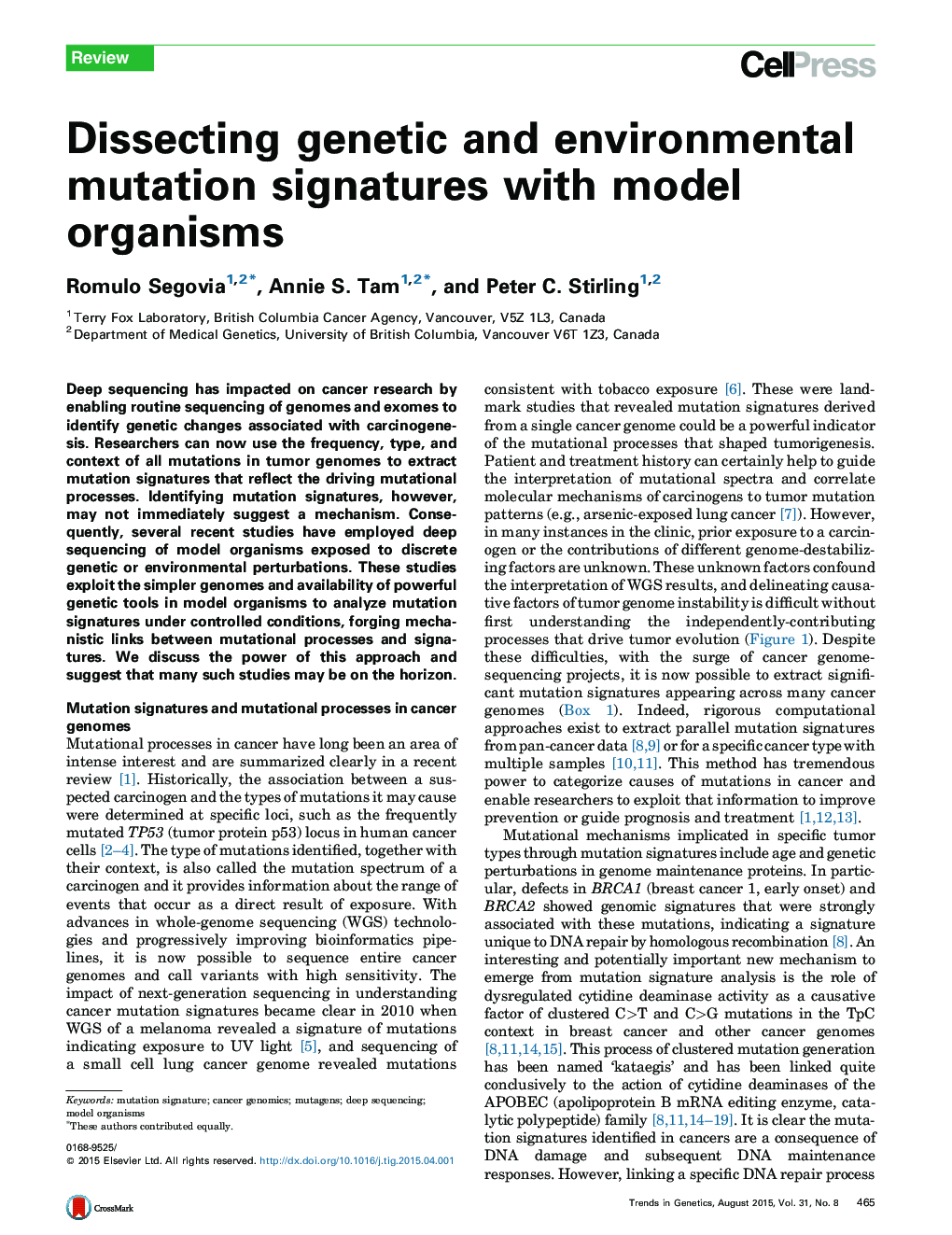| Article ID | Journal | Published Year | Pages | File Type |
|---|---|---|---|---|
| 2824680 | Trends in Genetics | 2015 | 10 Pages |
•Tumor genomes exhibit patterns of mutations driven by specific mutational processes.•Sequencing model organism genomes links mutational processes to mutation signatures.•Mutation patterns can reveal principles of DNA replication and repair.•Gene–environment interactions can be read out in mutation signatures.
Deep sequencing has impacted on cancer research by enabling routine sequencing of genomes and exomes to identify genetic changes associated with carcinogenesis. Researchers can now use the frequency, type, and context of all mutations in tumor genomes to extract mutation signatures that reflect the driving mutational processes. Identifying mutation signatures, however, may not immediately suggest a mechanism. Consequently, several recent studies have employed deep sequencing of model organisms exposed to discrete genetic or environmental perturbations. These studies exploit the simpler genomes and availability of powerful genetic tools in model organisms to analyze mutation signatures under controlled conditions, forging mechanistic links between mutational processes and signatures. We discuss the power of this approach and suggest that many such studies may be on the horizon.
